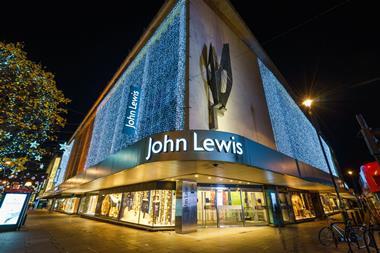Customer relationship management (CRM) is too focused on transactions and now retailers must build two-way relationships.
Customer relationship management (CRM) is one of those terms that’s been bandied around for at least the last 15 years.
It implies that we’re going to build a relationship with customers when, in reality, CRM is normally no more than a crude loyalty based points programme or an incentive to spend more and save.
I’d argue that too often retailers give away margin without really knowing what the impact is on customer lifetime value and behaviour.
Tesco Clubcard, Boots Advantage and similar programmes have their strengths in driving propensity to buy, but at their core, they are spend and save schemes.
They are not building a lasting, long - term relationship that correlates with the lifestage of the customer.
I believe the acronym that best describes what this currently represents is customer transaction management (CTM). Retailers manage customers’ orders, they don’t build relationships.
Over the past decade we’ve seen a number of retailers go to the wall, primarily because they had flawed business models.
They hadn’t embraced the web, or the web had disrupted their sector.
They weren’t able to let customers shop how they wanted to, their customer value proposition no longer resonated and so on.
I don’t want to be too alarmist, but I genuinely believe over the next decade we will see more retailers go out of business because their focus remains on the here and now.
A focus on transacting with customers, but not going to the next level to truly understand their behaviour and build a meaningful two-way relationship built on trust.
And so not understanding what’s important to the customer throughout their lifecycle.
I buy from dozens of retailers online and I can’t think of one that sends me truly segmented, trigger-driven, behavioural emails based on who I am and what I buy, and therefore what else I might like.
John Lewis managed to send me emails to spruce up my women’s work wardrobe - not its best piece of propensity modelling.
I’ve also heard the term me-tail recently. That implies that we’ve moved from retail and etail to something more personal. After all, it’s all about me (and you) as a consumer.
So how can retailers deliver true CRM?
By joining up their customer data across all channels, including the call centre so that they have a single view of customers and their behaviour through all touchpoints.
Their marketing communications should also be joined up so that they send relevant communications via email and other channels, which are aimed at adding value to me based on my behaviour.
Clienteling solutions in store and the use of iBeacons to bring a more personalised in-store experience will be hugely important.
Whatever the correct term is, I don’t believe that CRM on its own is enough, even when the true definition moves towards relationship management.
Maybe it should be CLM - customer lifecycle management.
Only once retailers build relationships that deliver relevant products, promotions, content, service and added value that recognises where the customer is in their lifecycle, can they truly hope to build a meaningful long-term relationship with their customers.
- Martin Newman is chief executive of Practicology


























2 Readers' comments